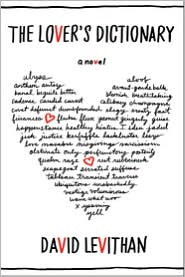 What do you do when you realize your parents are people - people who make mistakes, people who had lives before you were born? What happens in that moment - and what happens afterwards?
What do you do when you realize your parents are people - people who make mistakes, people who had lives before you were born? What happens in that moment - and what happens afterwards? Ask Nick Brandt, the main character in Alyssa B. Sheinmel's new novel The Lucky Kind. Nick's a junior at a private school in New York and, up until now, his life has been pretty solid. He's not the best student, but he's not the worst. He's the only child of two attentive parents. He's got a crush on a girl named Eden who is as intriguing as her name suggests. Nick and his best friend Stevie are as thick as thieves. Almost like brothers.
Then Nick discovers that he has a brother. A flesh-and-blood brother, born to his father's college girlfriend twenty-nine years ago and given up for adoption. His father's always known about his first son, and though he told his wife about his firstborn years ago, he didn't tell Nick. But now that Nick knows the truth, there's no way for him to forget it - and he can't see his parents the same way anymore. In the light of his father's lifelong lie - or omission of truth - Nick's home, his childhood memories, and his family's routines all seem tainted somehow.
I don't want to reveal too much here; I actually didn't want to tell you gentle readers about Nick's brother, but if I hadn't, this would have been an extremely vague, short, and unsatisfying review. To discover the circumstances under which Nick discovers the existence of his older brother and what happens to his family - which includes Stevie and Eden just as much as his blood relatives - check out The Lucky Kind. Make sure you also pick up The Beautiful Between, Alyssa B. Sheinmel's memorable debut novel.





 In high school, I fell in love with H. P. Lovecraft's horror stories. I was fascinated with the creaky, gothic atmosphere and the immense scale of them--monstrosities that had been hidden away for millions of years or travelled between the stars. But more than that, I was fascinated by Lovecraft himself. His father died in an insane asylum when Lovecraft was eight, and Lovecraft and his mother moved in with two aristocratic-but-poor aunts. He was bright, reading 1,001 Arabian Nights, The Iliad, and The Odyssey as a child, but because of his own psychological problems and lack of finances, he wasn't able to go to college. Instead, he made a living writing stories for pulp magazines like Weird Tales. This money was barely enough to survive on, and Lovecraft died poor and largely unknown.
In high school, I fell in love with H. P. Lovecraft's horror stories. I was fascinated with the creaky, gothic atmosphere and the immense scale of them--monstrosities that had been hidden away for millions of years or travelled between the stars. But more than that, I was fascinated by Lovecraft himself. His father died in an insane asylum when Lovecraft was eight, and Lovecraft and his mother moved in with two aristocratic-but-poor aunts. He was bright, reading 1,001 Arabian Nights, The Iliad, and The Odyssey as a child, but because of his own psychological problems and lack of finances, he wasn't able to go to college. Instead, he made a living writing stories for pulp magazines like Weird Tales. This money was barely enough to survive on, and Lovecraft died poor and largely unknown. 










